AI-Powered Replay Analysis: Transforming Sports Strategy and Insight
Updated On: August 23, 2025 by Aaron Connolly
Core Concepts of AI-Powered Replay Analysis
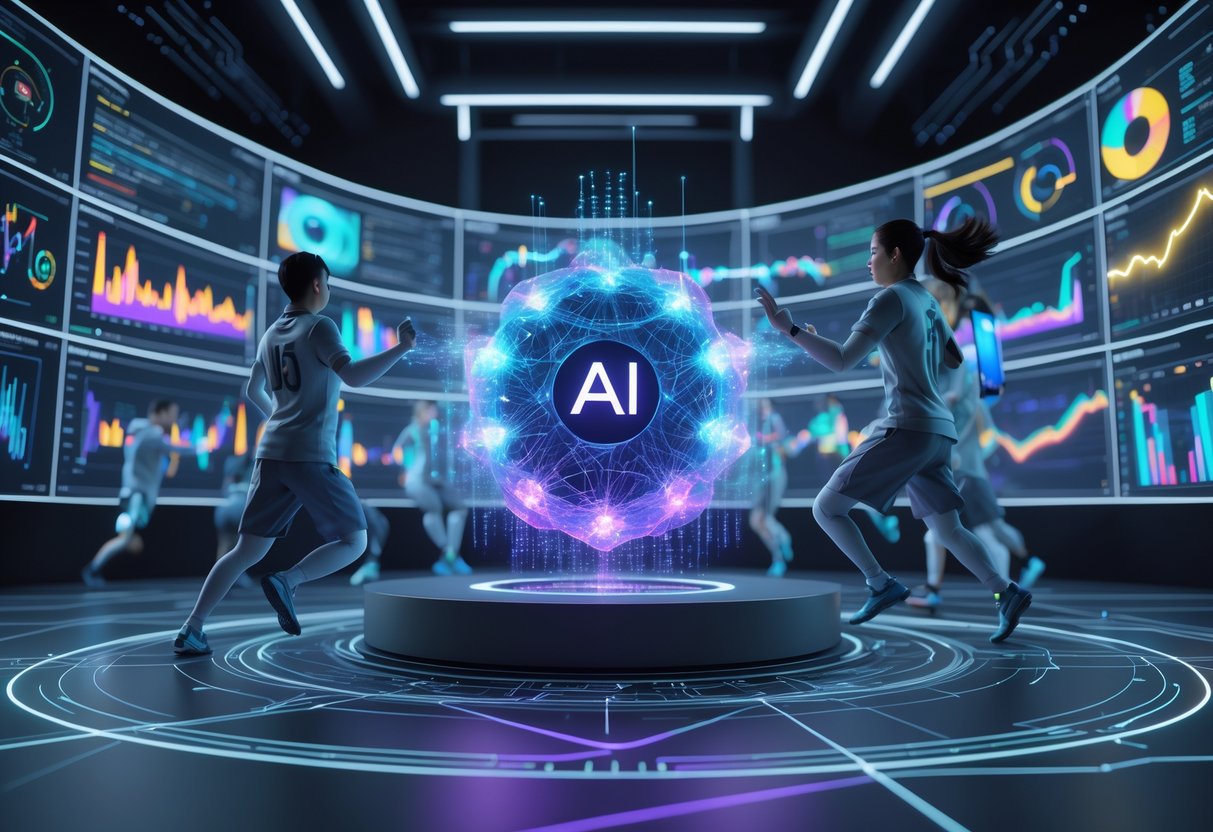
AI-powered replay analysis takes machine learning algorithms and uses them to review gaming footage automatically. These systems pull out meaningful patterns in player behaviour, processing thousands of clips in just minutes.
They spot tactical errors, highlight successful strategies, and pinpoint areas for improvement—things that would take a human analyst hours to notice.
Definition and Key Features
AI technology has really changed how we look at esports replays. It automates the review process, so instead of slogging through hours of footage, AI scans gaming clips and sorts them by actions or behaviours.
Pattern recognition sits at the heart of this. AI finds repeated mistakes across matches and flags strategies that lead to wins.
Key capabilities include:
- Automatic categorisation of clips based on in-game actions
- Real-time analysis during live matches
- Behaviour pattern detection over multiple sessions
- Early issue identification before they snowball
Modern systems handle both web and mobile gaming footage. They track everything from mouse movement to big-picture strategic calls.
Differences from Traditional Replay Methods
Traditional replay analysis puts the burden on human analysts to watch every clip, one by one. For pro teams, reviewing tournament footage can eat up hundreds of hours.
Manual analysis has some real drawbacks:
- Reviewing takes forever
- Clip selection gets clouded by human bias
- Patterns slip through the cracks in big datasets
- Quality of analysis jumps around
AI-powered systems just blast through these problems. They review every second, never get tired, and don’t play favourites.
The speed difference is wild. A human might need 8 hours for a single match, but AI can do it in minutes. Teams say they cut review time by half or more with AI.
AI also tailors insights to different roles. Coaches get tactical patterns, while players focus on their own mechanical improvements.
Types of Data Processed
Data analytics in AI replay systems chew through three main categories from esports footage.
Behavioural data covers player actions and decisions—movement, reaction times, and strategic choices.
Performance metrics zoom in on technical execution. AI tracks accuracy, timing, and skill consistency in various situations.
Contextual information looks at the situation—map positions, team comps, and match circumstances all get factored in.
Common data types include:
- Mouse and keyboard input
- Character movement and position
- Resource management decisions
- Timing and effectiveness of communication
AI even processes audio from team comms. It finds patterns in call-outs and spots communication breakdowns that hurt performance.
AI Technologies Behind Replay Analysis
Modern AI replay systems lean on machine learning and computer vision to process footage in real time. These technologies pick out key moments, track player movements, and generate multi-angle replays on the fly.
Machine Learning Models
Neural networks really drive AI replay analysis. Deep learning models comb through thousands of hours of footage, learning to spot important moments.
Convolutional neural networks (CNNs) shine at recognizing specific events—goals, kills, power plays. They train on huge datasets full of labelled footage.
Generative adversarial networks (GANs) make replay transitions smoother. They fill in missing frames when switching angles, so replays look natural and cinematic.
Real-time processing needs special model architectures. Companies use edge computing to keep latency low, so highlights show up within 10-15 seconds of live action. That’s pretty crucial for keeping viewers engaged.
Natural language processing models also listen to crowd reactions and commentary. They connect audio cues to visuals, making highlight detection more accurate.
Computer Vision Applications
Computer vision lets AI systems “see” and understand gameplay footage. Object tracking algorithms follow players, balls, and equipment across multiple feeds at once.
Motion detection spots quick movements that often mean something big just happened. The system checks velocity, direction, and collisions to flag highlights.
Multi-camera synchronisation lines up timestamps across feeds, making seamless replays possible. AI compensates for different camera positions and angles.
Pose estimation tracks body language and positioning. It picks up celebrations, fouls, or tactical formations that might be worth replaying.
Image enhancement steps in to clean up replay quality. It tweaks lighting, stabilises shaky footage, and boosts resolution for clearer views.
Pattern Recognition Techniques
Pattern recognition teaches AI what’s worth replaying. Behavioural analysis looks at player movements, crowd reactions, and score changes to predict highlights.
Statistical models compare current gameplay to past patterns. When something unusual happens, the system flags it for replay.
Temporal pattern matching finds repeating sequences across matches. This helps AI get better at understanding each sport’s context.
Clustering algorithms group similar plays together. You get consistent replay styles for things like goals or defensive saves.
Machine learning models keep refining pattern recognition with feedback. Editors approve or reject highlights, teaching the system what people actually want to see.
Real-Time Processing and Instant Decision Support
AI systems dive into replay footage instantly during live matches. They deliver automated rule checks and tag highlights within seconds.
Referees get quicker decisions, and coaches receive tactical insights right away.
Frame-by-Frame Analysis
Modern AI crunches each video frame in milliseconds during live play. Computer vision tracks player positions, ball movement, and referee spots across multiple camera angles.
Processing speed really counts. Systems run at 60 frames per second, running calculations on every image. That builds detailed movement maps and collision data in real time.
The tech breaks plays down into measurable parts:
- Player speed and acceleration
- Ball trajectory
- Contact points for fouls
- Offside tracking
Data analytics platforms mix this frame data with historical patterns. Coaches get instant comparisons to past matches, spotting tactical weaknesses right away.
Automated Rule Violation Detection
AI flags possible rule breaks as they happen. The software checks live action against programmed rules, highlighting incidents for referee review.
Common violations flagged:
- Offside in football
- Handball
- Out-of-bounds
- Illegal contact in basketball
Processing wraps up 2-3 seconds after the event. Referees see alerts on their devices, with replay angles and confidence scores.
Quick note: These systems help, but don’t replace, human judgment. Referees still make the final call—AI just brings more consistency.
Missed calls drop a lot with this tech. Studies show automated detection picks up violations that humans miss in fast-paced moments.
Live Event Tagging
AI tags every significant game moment automatically. The system finds goals, fouls, substitutions, and tactical changes—no human input needed.
Real-time tags cover:
- Scoring chances and shot types
- Defensive formations
- Player stats
- Crowd reactions
Broadcast teams can grab tagged highlights instantly during coverage. They don’t have to slog through footage to find the right play.
Coaches really love this organisation. They pull up opponent weaknesses at half-time with just a keyword search.
Tagging accuracy actually improves as the match goes on. Machine learning tweaks its recognition based on team styles and referee habits.
Performance Assessment and Player Metrics
AI-powered replay analysis is changing how we measure player performance. It tracks precise movements, positioning patterns, and physical cues that coaches might miss.
These systems hand over detailed metrics, revealing subtle performance changes invisible to the naked eye.
Movement Tracking and Analysis
Modern AI captures every bit of player movement with crazy precision. Computer vision tracks running speed, acceleration, and direction changes the whole match.
The data digs deeper than just distance covered. Now, we get reaction times, sprint efficiency, and movement smoothness. Basketball players get dribbling mechanics analysed, while footballers see breakdowns of passing under pressure.
Key movement metrics:
- Sprint velocity: Peak speed and acceleration
- Change of direction: Agility and cutting
- Technique analysis: Form consistency
- Energy use: Efficiency patterns
Platforms like Hudl use automated tracking to deliver these insights instantly. Coaches get real-time feedback in training, so they can tweak things on the spot.
The system points out technical issues that you might miss just watching. Even a small change in running or passing gets flagged before it turns into a bigger problem.
Player Positioning Insights
AI really shines at analysing player positioning all match long. Heat maps show exactly where athletes spend time and how well they use space.
The tech tracks positioning relative to teammates, opponents, and key areas. Football defenders learn about marking, while basketball guards see court coverage patterns.
Advanced analysis uncovers tactical intelligence. We can actually measure decision-making through positioning in different situations.
| Position Metric | What It Measures | Impact |
|---|---|---|
| Heat mapping | Area coverage patterns | Space utilisation |
| Pressure zones | Defensive positioning | Tactical awareness |
| Support angles | Attacking positions | Team coordination |
This sports analytics approach helps spot players who always find the right spots. Bad habits get fixed before they cost the team.
Teams use this data for tactical planning. Knowing how players move naturally lets coaches design formations that play to everyone’s strengths.
Anomaly and Fatigue Detection
AI monitoring systems pick up odd movement patterns that hint at fatigue or possible injury prevention needs. Small changes in gait, reaction, or position can signal trouble brewing.
The tech builds a baseline for each player. When movement strays from normal, coaches get alerted.
Fatigue detection comes in handy during tough training. Players might not notice their own drop-off, but AI catches the early signs.
Common fatigue indicators:
- Slower sprints
- Delayed reactions
- Technique inconsistency
- Bad positioning
This proactive approach helps prevent injuries before they happen. Rest recommendations come from real data, not just gut feeling.
Heads up: Ignoring these AI alerts usually leads to performance drops or injuries pretty quickly.
The system learns each player’s quirks over time. What looks like a problem for one might be totally normal for another.
Team Formations and Tactical Insights
AI systems now recognise complex team formations in seconds. They decode tactical patterns that would take human analysts hours to spot.
These tools help coaches see how teams shift strategies mid-match and uncover weaknesses in the opposition’s setup.
Formation Recognition
AI-powered replay systems now track player positions and movement patterns throughout matches to identify team formations. The technology maps each player’s spot on the pitch and checks distances between teammates, revealing tactical shapes in real time.
Modern systems recognize over 20 different formations, including setups like 4-2-3-1, 5-3-2, and fluid shapes that shift during play. AI can spot formation shifts in real-time, so coaches get instant alerts when opponents switch from defense to attack.
The software uses geometric deep learning to grasp spatial relationships between players. It doesn’t just see where players stand—it understands how they actually work together as a unit.
Quick win: Many systems overlay formation graphics right onto match footage, so coaches can show players exactly how the team’s shape looked at key moments.
Tactical Adjustments
AI tracks how teams change tactics based on situations like scoreline shifts or player substitutions. The technology notices patterns in tactical switches that successful teams rely on.
For example, these systems reveal if a team usually drops deeper when leading by one goal after 70 minutes. Coaches use this data to prep specific responses to common tactical changes.
The software analyses timing patterns for tactical adjustments. It might point out that teams become vulnerable in the first five minutes after making formation changes.
AI measures how effective different tactical setups are against certain opponents. Coaches see which formations work best against high-pressing or deep-sitting teams.
| Tactical Change | Success Rate | Typical Timing |
|---|---|---|
| High press activation | 67% | 15-30 minutes |
| Defensive transition | 84% | After 60 minutes |
| Wing overloads | 52% | Set piece situations |
Opposition Strategy Decoding
AI systems break down opponent footage to spot their favorite tactical approaches and predictable patterns. The technology shows which formations teams use most and when they tend to change tactics.
Many coaches now use AI to prepare tactical reports that reveal exactly how opponents act in different match situations. These reports highlight weaknesses like slow transitions between attack and defense.
The software predicts tactical changes using historical data. If an opponent usually switches to three center-backs when losing, coaches can prep counter-tactics ahead of time.
AI also singles out key players who trigger tactical changes. It might show that when a certain midfielder drops deep, the team always shifts to a more defensive setup within two minutes.
Warning: Don’t rely entirely on AI predictions during live matches. Opposition coaches might deliberately mix things up to outsmart teams that depend too much on data analysis.
Highlight Generation and Automated Event Summaries
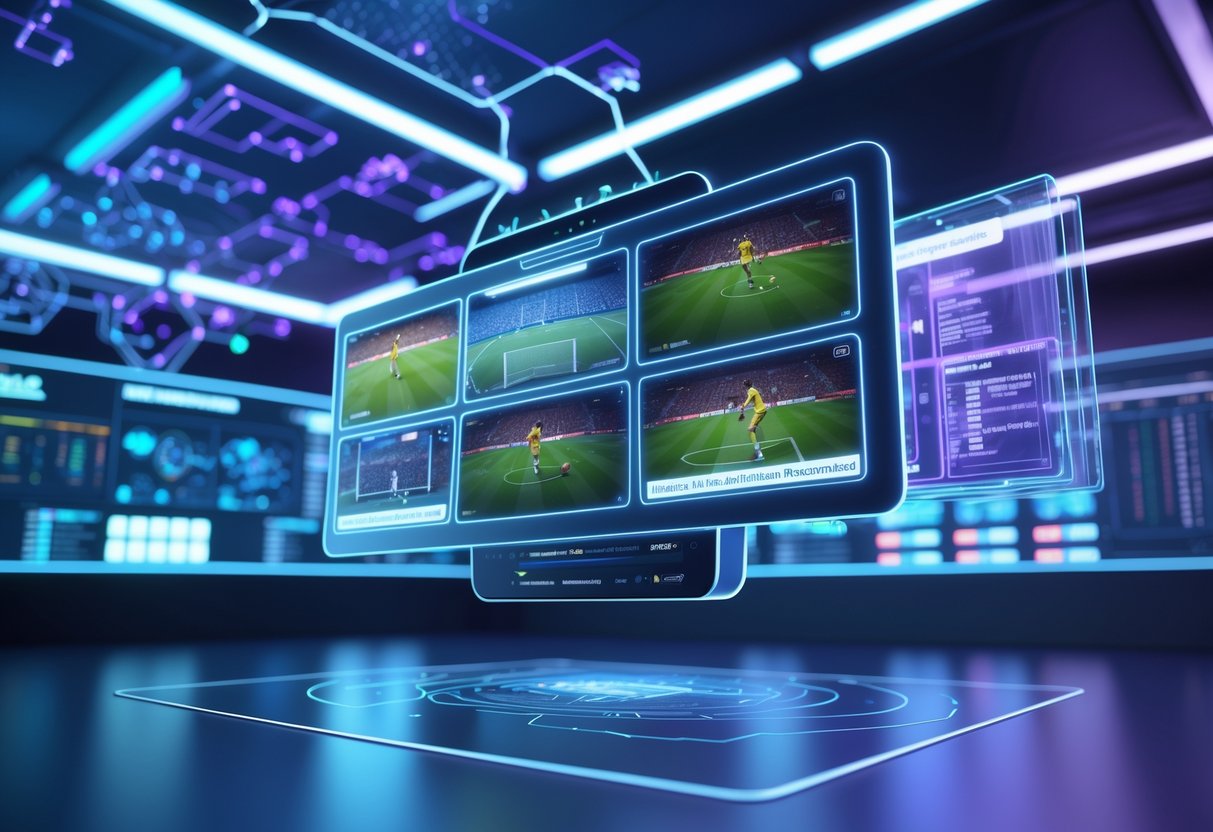
AI systems now comb through hours of gameplay footage to pick out the most exciting moments and create polished summaries automatically. Broadcasters produce content faster, and fans don’t miss crucial plays or tournament-defining moments.
Key Moment Identification
AI algorithms scan multiple data streams to find highlights worth capturing. They track sudden spikes in crowd noise, commentator excitement, and visual cues like score changes or special effects.
Visual Recognition Patterns:
- Goal celebrations and team reactions
- Critical skill shots and clutch plays
- Tournament bracket progressions
- Player emotional responses
These systems learn from thousands of hours of labeled footage. They know when a CS ace happens or a League of Legends baron steal goes down.
Modern platforms like Amazon’s Media Replay Engine process live streams as they happen. Highlights pop up within seconds of the actual play.
Audio Analysis Components:
- Commentator volume spikes
- Crowd cheering intensity
- In-game sound effects
- Musical stingers and broadcast cues
Machine learning models mix these signals to assign confidence scores. Higher scores mean moments are more likely to engage viewers.
Playlist Compilation
Once AI finds key moments, it arranges them into highlight reels that actually flow. The system considers narrative, match context, and how long viewers are likely to pay attention.
Automatic Editing Features:
- Smooth transitions between clips
- Replay angle selection
- Optimal clip duration timing
- Background music synchronization
The technology handles technical stuff like color correction and audio leveling. Coaches and editors get professional broadcast quality without spending hours on manual tweaks.
Different playlist types fit different audiences. Quick 30-second social clips reach casual fans, while extended 5-minute recaps give dedicated followers the deeper analysis they crave.
Content Categorization Options:
- Best plays of the match
- Player-specific highlights
- Team comeback moments
- Tournament progression summaries
Broadcasters can generate several versions at once. This saves time and boosts content distribution across platforms.
Content Personalisation
AI tailors highlight packages for individual viewers based on their preferences and behavior. The system tracks which teams, players, and play styles each user actually watches.
Personalisation Factors:
- Favorite teams and players
- Preferred game modes
- Historical viewing duration
- Social sharing patterns
Smart algorithms tweak clip selection accordingly. If you follow a certain player, you’ll see more of their gameplay moments.
The technology even considers viewing context. Mobile users get shorter, more digestible highlights, while desktop viewers might get longer analysis segments.
Customisation Levels:
- Team-focused compilations
- Position-specific plays (support highlights, carry montages)
- Strategic moment breakdowns
- Memorial tournament runs
This approach really boosts engagement. Fans spend more time watching content that feels made for them, not just generic highlight reels.
Predictive Analytics for Strategy Development
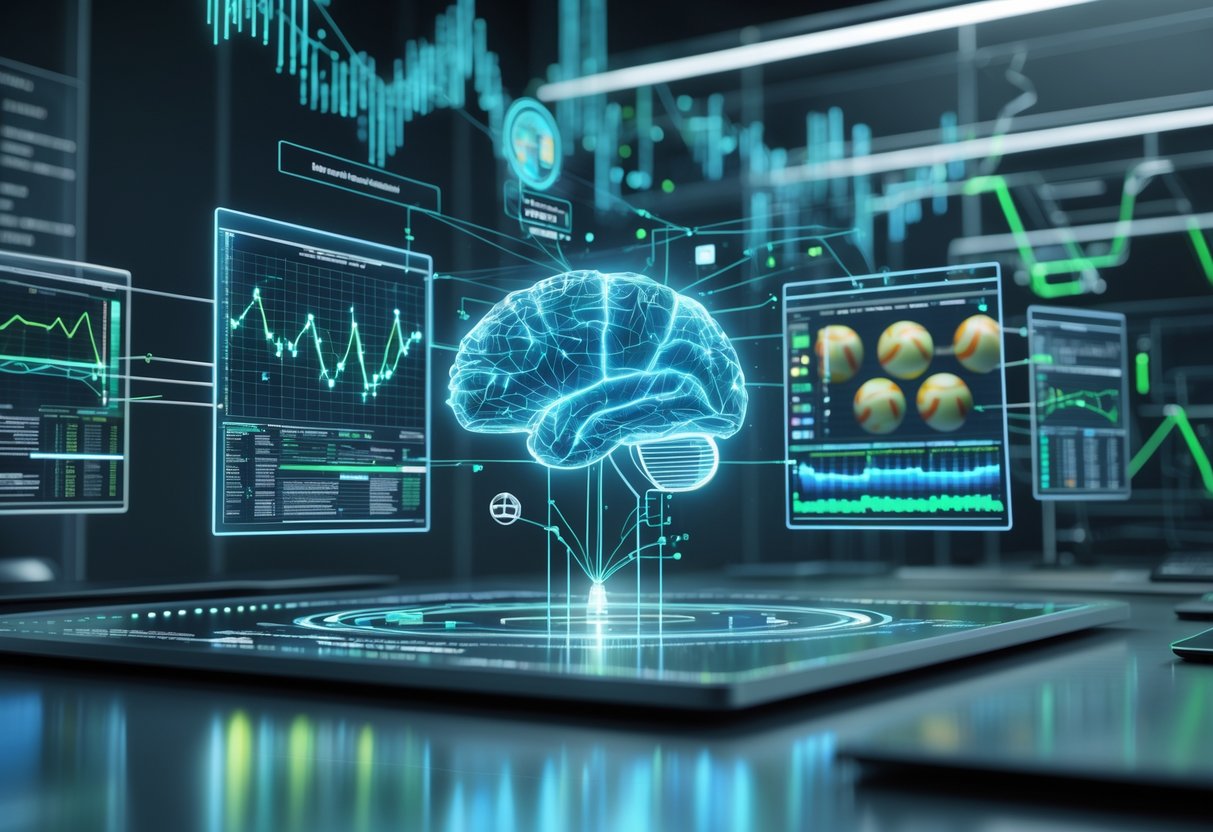
Teams now use AI to predict opponent moves and test new tactics before matches even start. These systems crunch massive amounts of gameplay data to spot patterns coaches might never notice.
Scenario Modelling
We can now simulate thousands of match scenarios in minutes. AI takes current team compositions and maps out strategies, predicting likely outcomes using historical data.
Key simulation types include:
- Draft phase predictions – forecasting opponent picks and bans
- Map control scenarios – testing positioning strategies
- Resource allocation models – optimizing economy builds
Teams input variables like player form or meta changes. The system runs multiple simulations, showing win percentages for each approach.
Top organizations use these models during practice. Coaches can test risky strategies without burning scrim time, and players see how small positioning tweaks affect team fight outcomes.
The data helps teams prep backup plans. If their main strategy fails, they already know which alternative gives them the best shot.
Trend Forecasting
Predictive analytics spot emerging meta shifts before they become obvious. AI tracks patch changes, player behavior, and tournament results to predict future trends.
Popular forecasting applications:
- Champion/hero viability – predicting which picks will rise
- Strategy evolution – spotting new tactical approaches
- Player performance trends – catching form changes early
Gaming expert James Connolly says teams using trend forecasting gain real advantages. They practice new strategies while everyone else sticks to outdated ones.
The systems analyze pro matches and ranked gameplay data together. This broader view reveals patterns that tournament-only analysis might miss.
Teams adjust training schedules based on predicted changes. If the data suggests aggressive early game strategies will dominate, they focus practice sessions there.
Opponent Analysis
AI breaks down opponent playstyles into clear patterns. Teams upload match replays and get detailed breakdowns of enemy tendencies and weaknesses.
Analysis focuses on:
- Individual player habits – preferred positions and timing
- Team coordination patterns – rotation and grouping behaviors
- Decision-making under pressure – late game choices
The systems flag specific triggers that make opponents slip up. Teams learn exactly when rivals become vulnerable during matches.
Counter-strategy suggestions show up automatically. If opponents favor early aggression, the AI recommends defensive setups that punish overextension.
Warning: Relying too much on opponent analysis can make teams predictable. It’s smart to balance data insights with flexible gameplay to avoid getting stuck in a rut.
Injury Prevention and Player Welfare
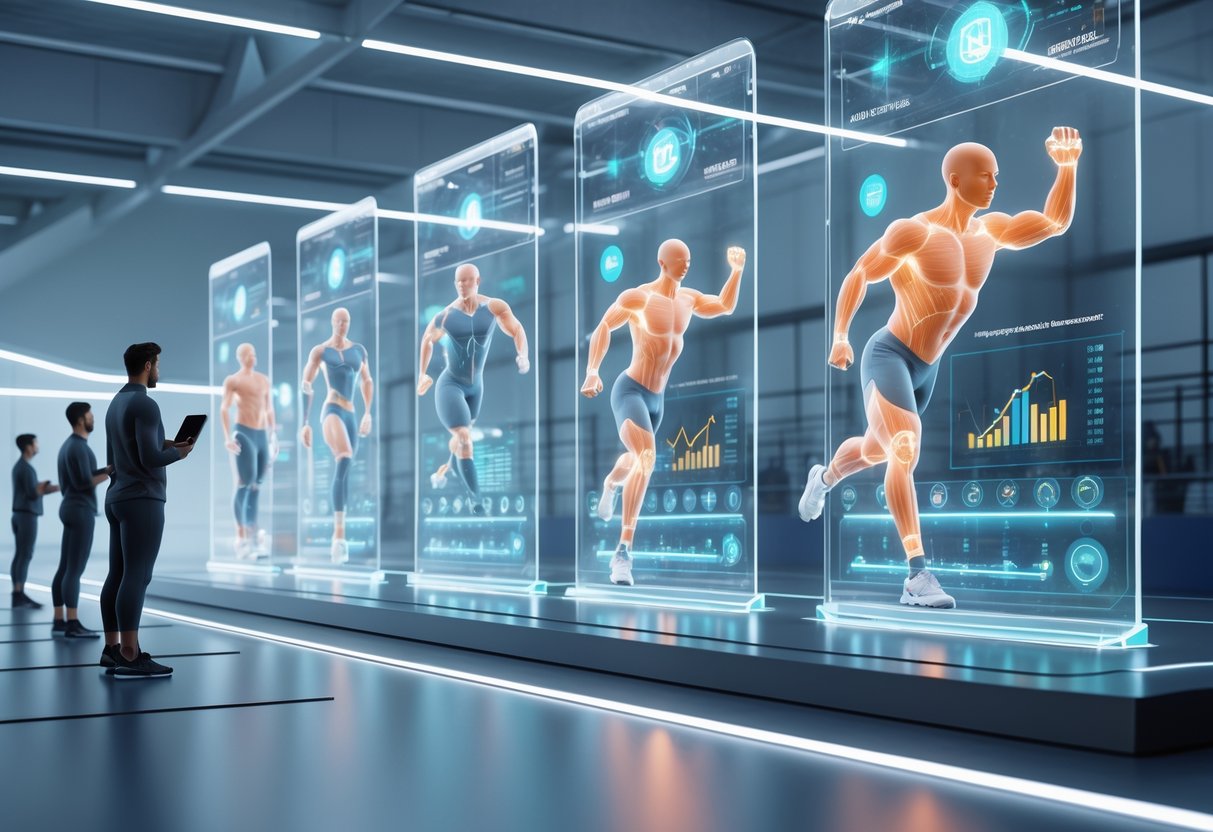
AI-powered replay analysis tracks subtle movement changes and fatigue signals that people might miss. These systems can spot dangerous gameplay situations before injuries even happen.
Movement Pattern Monitoring
Modern AI systems look at thousands of movement data points during gameplay. This includes mouse acceleration, reaction times, and keystroke intensity.
The technology catches early signs of repetitive strain injuries (RSI) in hands and wrists. Warning: Many pro gamers develop chronic pain from bad ergonomics and overuse.
AI compares each player’s current movement patterns to their baseline data. Sudden changes in clicking speed or weird mouse movements often signal brewing problems.
Teams use this data to schedule mandatory rest periods. Some organizations make players take movement breaks every 45 minutes, following AI recommendations.
The system also tracks posture using webcam analysis. Poor sitting positions cause neck and back problems that hurt long-term performance.
Quick win: Amateur players can use tracking apps like Workrave or RSIGuard to monitor their own habits.
High-Risk Situation Detection
AI spots gameplay situations that crank up physical stress for players. High-intensity tournament moments often trigger muscle tension and bad breathing habits.
The technology monitors stress indicators including:
- Rapid heartbeat during clutch moments
- Tense shoulders and neck
- Blinking rate changes during focus
- Grip pressure on gaming gear
Teams get real-time alerts when players hit dangerous stress zones. Coaches can call tactical timeouts to prevent burnout and keep performance high.
Tournament organizers use this data to improve player welfare standards. Many events now require longer breaks between matches based on AI stress analysis.
The system tracks sleep patterns and recovery times between practices. Poor rest links directly to higher injury rates in pro gaming.
Some teams hire wellness coaches who work with AI data to create custom recovery programs for each player.
Benefits for Coaches and Analysts

AI-powered replay analysis gives coaches instant access to detailed performance data and tactical insights. Analysts can process hours of footage in minutes and deliver feedback that actually changes training sessions.
Enhanced Feedback Delivery
Coaches no longer have to rely on vague comments like “you need to move better.” AI replay analysis gives them concrete data to share with players.
The system tracks exact positioning, movement patterns, and decision moments. Coaches can show players exactly where they missed a rotation or highlight successful tactical moves with timestamp accuracy.
Visual feedback gets a huge boost. Players watch slow-motion replays with AI overlays showing the best positioning or movement paths. This takes the guesswork out of coaching.
Some coaches use AI data to create custom video packages for each player. These might include their best defensive moves, areas to improve, or moments of tactical brilliance.
The objectivity helps, too. When AI shows hard data about performance, players tend to accept feedback without feeling personally attacked.
Efficient Workflow Integration
AI replay analysis drops right into existing coaching routines. Most systems work with the video analysis software coaching staff already use.
Processing time shrinks dramatically. What used to take analysts 4-6 hours now happens in 30-45 minutes. That frees up time for strategy and player development.
Real-time processing lets coaches review key moments at half-time or right after training. No more waiting until the next day to fix tactical issues.
Automated highlight generation is a big plus. AI picks out critical moments—like great plays, errors, or tactical shifts—without any manual input.
Sports analytics teams say AI handles the grunt work of data collection. They get to focus on interpretation and strategy instead of slogging through video.
Data-Driven Training Plans
AI replay analysis turns training into evidence-based planning. Coaches spot specific skill gaps and tactical weaknesses with real data.
The system uncovers patterns that coaches might miss. Maybe a player struggles with positioning in the last 20 minutes, or certain formations always fall apart under pressure.
Training gets more targeted. Instead of generic fitness work, coaches design drills that fix exact performance issues flagged by AI.
| Training Focus | Traditional Method | AI-Enhanced Method |
|---|---|---|
| Fitness gaps | General conditioning | Specific endurance metrics |
| Tactical work | Broad concepts | Precise positioning data |
| Skill development | Coach observation | Performance analytics |
We can track progress over time with measurable data. Coaches adjust training intensity and focus based on actual improvement, not gut feeling.
Player workload management becomes more scientific, too. AI flags fatigue patterns and injury risk indicators, so coaches can plan rest and recovery better.
Role of Broadcasters and Content Creators
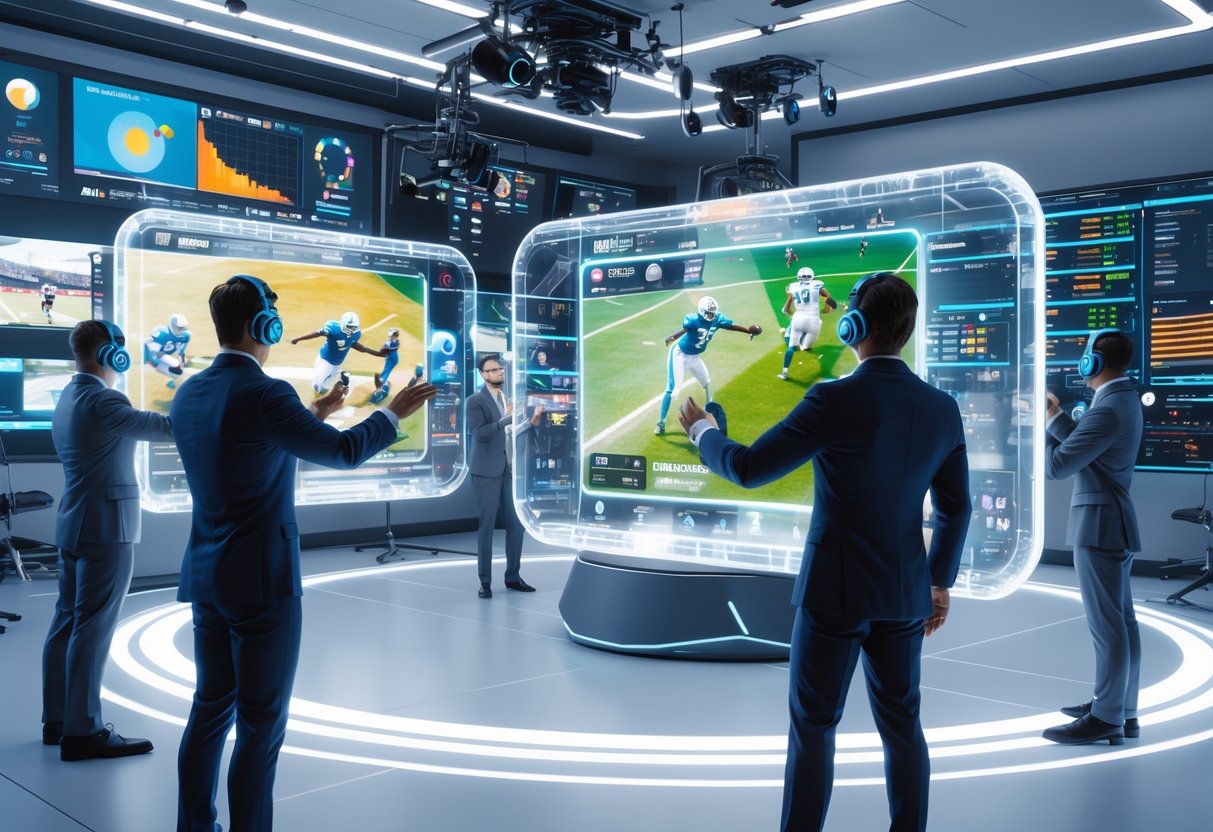
Broadcasters now rely on AI-powered replay analysis to whip up instant highlights and serve up personalized viewing experiences that actually keep fans hooked during matches. Content creators use automated systems to push targeted replays across all sorts of platforms, and honestly, it saves a ton of manual editing.
Engaging Fan Experiences
AI is changing how broadcasters connect with viewers during live esports. Smart replay systems jump in to spot key moments—like clutch plays, wild team fights, or those game-changing split-second decisions—almost as soon as they happen.
Interactive replay features let fans pick camera angles or hop into different player perspectives. You can pull up instant stats for specific plays and even compare them to data from past tournaments.
Broadcasters now send out personalized highlight packages based on what each viewer likes. If you’re following a certain team or star player, AI pulls up the best replays and pings them straight to your phone.
Real-time engagement tools powered by AI include:
- Instant polls about the importance of a replay
- Social media sharing with automated clips
- Predictive analytics showing win chances shifting
- Player performance comparisons in the heat of the moment
These features keep fans active instead of zoning out. During breaks, viewers stick around while AI crafts mini-documentaries about player rivalries or tactical shifts.
Automated Content Distribution
Content creators are loving AI systems that handle replay distribution everywhere at once. The tech wipes out hours of tedious editing that used to need whole video teams.
Multi-platform publishing happens the moment AI spots a highlight-worthy moment. The same replay pops up on YouTube, TikTok, Twitter, and streaming sites—each one tweaked for that platform, all without a human touching it.
AI figures out the best posting times by reading audience data and engagement patterns. Content scheduling algorithms check when different groups are most active on each app.
Automated metadata generation covers:
- SEO-friendly titles and descriptions
- Hashtags to boost social media reach
- Thumbnails from the most eye-catching frames
- Closed captions in several languages
AI opens up new revenue streams by spinning out more content from the same match. Broadcasters can whip up team-specific reels, player highlight videos, and tactical breakdowns, all from one source.
The system tracks how each piece performs and tweaks future strategies to get more engagement and views.
Improving Fair Play and Officiating Accuracy
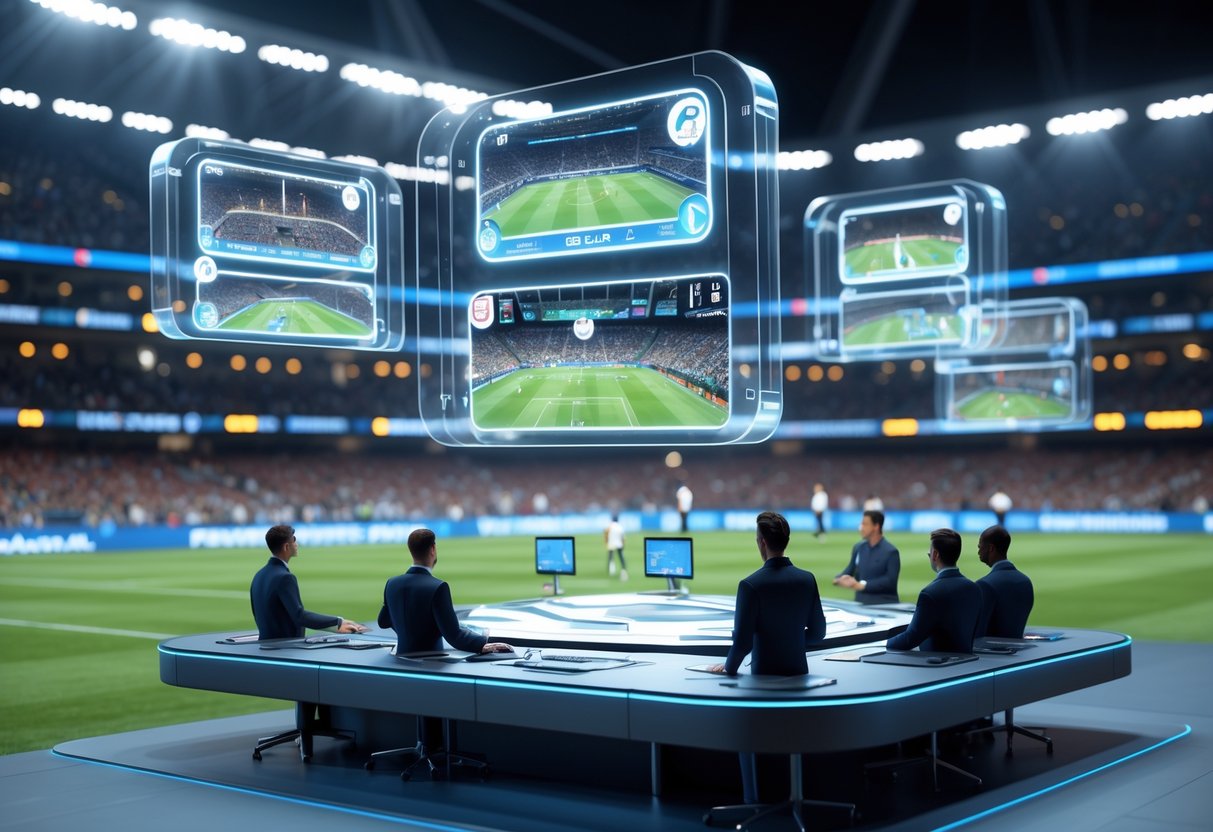
AI-powered replay systems make officiating more consistent and objective by cutting out human slip-ups or bias. Real-time processing lets officials break down complicated plays instantly—stuff that would trip up even seasoned referees.
Rule Enforcement Mechanisms
Modern AI systems can spot rule violations with surprising accuracy in different sports. Computer vision algorithms track player movement, ball paths, and contact points in a blink.
In football, AI checks for offside by analyzing multiple camera angles at once. The tech measures player positions the moment the ball moves, something linesmen can miss.
Tennis leans on Hawk-Eye technology to call balls in or out. It crunches trajectory data and gives instant feedback to both officials and the crowd.
In basketball, AI monitors shot clock violations and three-point line footwork. It flags when a player’s foot crosses the line during a shot.
| Sport | AI Application | Accuracy Rate |
|---|---|---|
| Football | Offside detection | 98.9% |
| Tennis | Line calling | 99.3% |
| Basketball | Shot clock monitoring | 99.1% |
AI also keeps an eye out for fouls and misconduct in real time. It can flag aggressive moves or risky play before things get out of hand.
Bias Reduction Through AI
Crowd noise, player reputation, even split-second instincts can sway human referees. AI, on the other hand, looks at every situation with the same lens, every single time.
Consistent decision-making happens because algorithms apply the same standards for every match. A foul in the opening minute gets the same treatment as one in crunch time.
Home advantage bias is a real thing—studies show refs often favor home teams. AI doesn’t care about the crowd or the venue.
Player reputation bias? AI doesn’t know if someone’s got a history of diving or rough play. It just sticks to the facts on the screen.
AI checks incidents against official rules on the spot. Officials get objective data to back up their calls, instead of just relying on gut reactions.
Heads up: AI systems need regular updates and calibration to stay sharp as rules and playing conditions shift.
The best results come when AI supports human referees—not when it tries to replace them.
Frequently Asked Questions
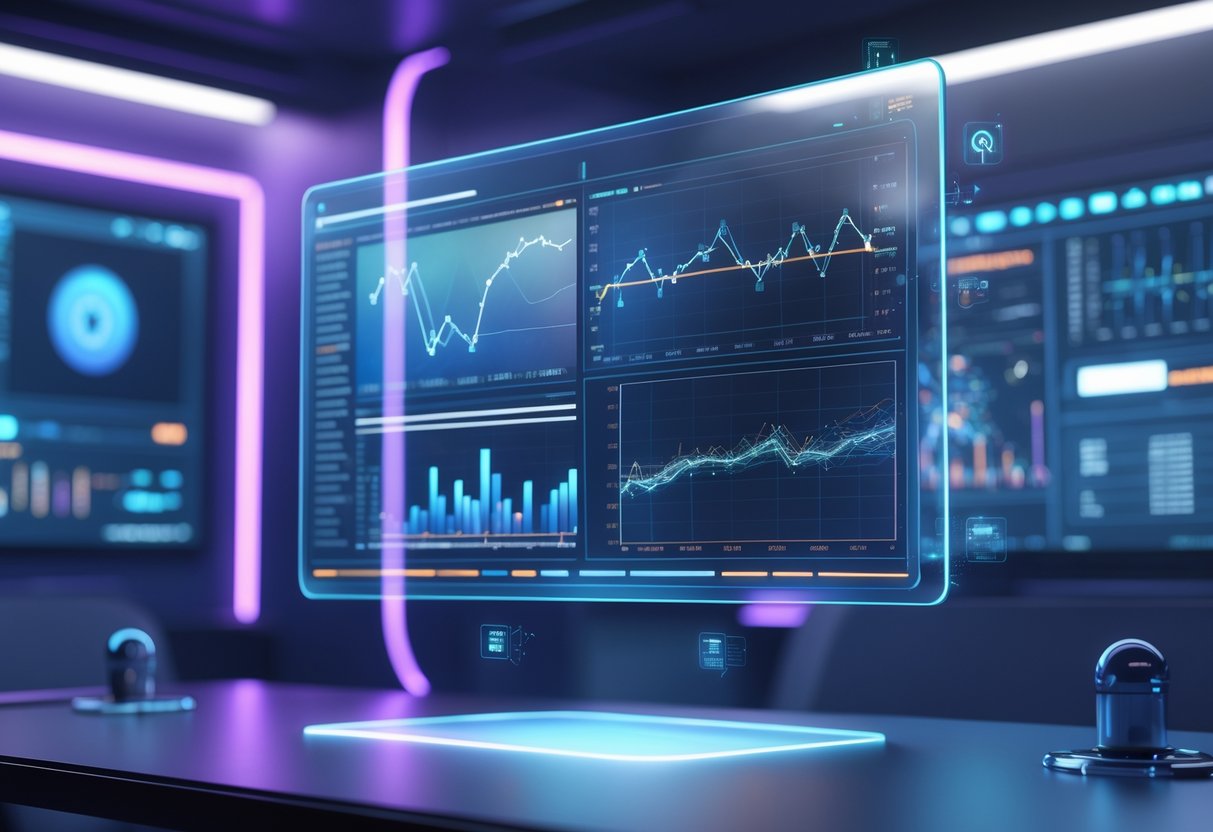
AI-powered replay analysis tools use machine learning to spot gameplay patterns, flag critical moments, and dig up performance insights that would take hours to find by hand.
What features can I expect from an AI-based replay analysis tool?
Most AI replay tools pick out big moments like kills, deaths, and objectives. They’ll map out your movements and highlight where you’re out of position.
Some advanced tools even measure your reaction times and decision speed. A few can compare your play to the pros in similar situations.
A lot of platforms now offer automated clip generation for your top plays. That means you can build highlight reels fast, with barely any editing.
How does machine learning enhance the quality of video game replay reviews?
Machine learning algorithms scan thousands of gameplay variables at once. They catch patterns that people just miss while watching live.
These systems learn from pro gameplay to spot top strategies. They’ll show exactly where your moves differ from what the best players do.
AI tools never get tired or distracted. Unlike a human coach, they keep the same level of analysis across hundreds of replays.
What are the benefits of using AI for performance analysis in esports?
AI gives you instant feedback after every match or practice. There’s no need to wait for a coach or set up review meetings.
It points out specific areas you need to work on, right down to the second. That way, you spend practice time fixing real weaknesses instead of guessing.
It’s also way more affordable for amateurs. Most AI tools run £10-30 a month, compared to hundreds for personal coaching.
In what ways can artificial intelligence provide insights that traditional replay methods cannot?
AI goes frame by frame, pulling data that humans just can’t process manually. It tracks micro-movements and split-second timings over an entire match.
Traditional reviews lean on what people notice and remember. AI, though, stores and compares data from thousands of games to give you real context.
These tools can even predict what your opponent might do based on positioning patterns. They spot tendencies that only show up over lots of games.
How do I set up and integrate AI-powered analysis into my training routine?
Most AI replay tools hook into your game with official APIs. Popular ones include Mobalytics for League of Legends and Leetify for CS2.
Start by recording five to ten matches for a baseline. The AI needs some data to figure out your current skill set and play style.
Set up weekly review sessions with those AI-generated reports. Zero in on the top two or three improvement areas the system highlights, instead of trying to fix everything at once.
What are the data privacy concerns when using AI for analysing gameplay footage?
Most AI platforms store your gameplay data on cloud servers to process it. Make sure you check if the provider uses encryption and actually follows UK GDPR rules.
Some tools might share anonymised gameplay patterns just to improve their algorithms. It’s worth reading the privacy policies—do you really know how your data gets used for system training?
Pick platforms that let you delete your data and close your account if you want. Stay away from services that try to hold on to your gameplay footage or match stats forever.

